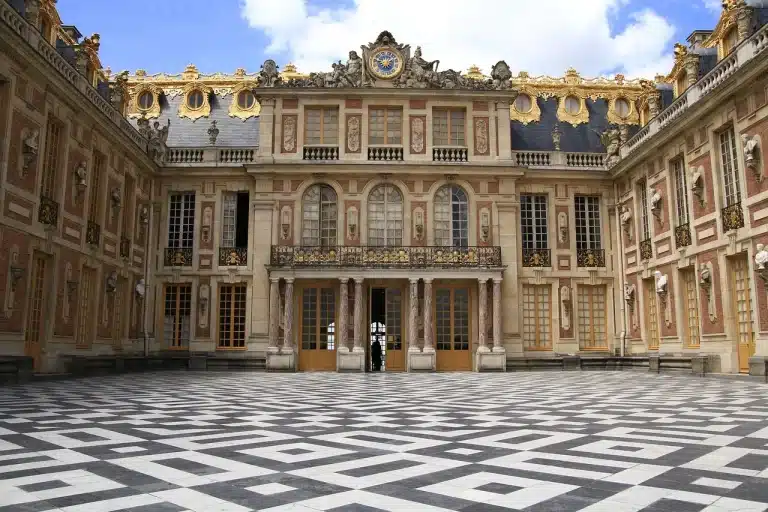The Canals of Bruges — A Guide for Travelers
If you’re going to Belgium, you must spend time strolling along the canals of Bruges. Unlike other European water cities — namely Venice — you won’t find the same large crowds or packs of rowdy tourists. Bruges is a perfect location for travelers who want a quaint, relaxing vacation rather than getting caught up in the hustle and bustle of a packed itinerary.
Don’t get me wrong, there are plenty of things to do in Bruges, but you won’t have the same pace or volume of tourists as you do in nearby Paris (under 3 hours by train) or Amsterdam (around 3 hours away by train). The canals of Bruges are a fantastic place to grab a stroopwafel, sip on a bevvy, and enjoy the water.
They’re going to get even more beautiful too, as 14,000 flowers are being planted alongside the canals.
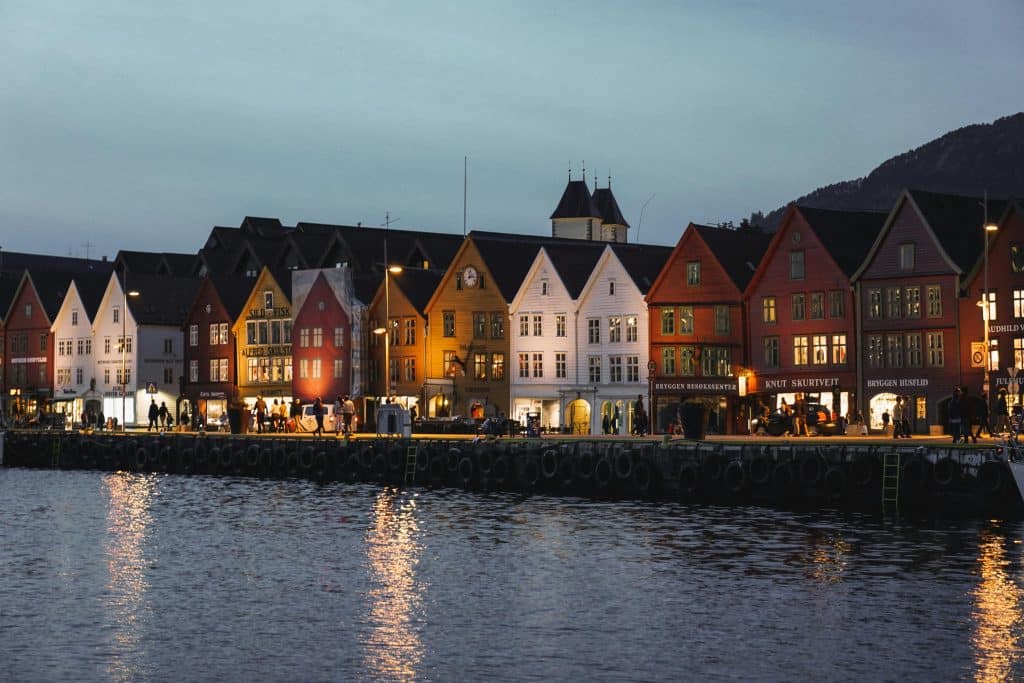
The canals of Bruges at night. Photo by alleksana.
The Canals of Bruges
Augustijnenrei — Augustine Canal
The Augustine Canal was excavated in the 12th century and it’s a hidden gem not known to many tourists. It’s home to the Augustine Bridge, one of the oldest in the city — duh, because where there’s a waterway there’s going to have to be something to cross that chasm.
The canal was named for the Augustinian monastery that used to sit along the canal’s banks, no longer in operation. Even though the monastery no longer stands, you’ll find the same peace and tranquility that drew monks to convent life strolling along this canal.
Brugge-Zeebrugge Canal
The Zeebrugge has been an important trade and commerce center in Bruges since the medieval era. Several instances of flooding helped connect the area to the broader area, but after the 15th century, its importance dwindled.
The current version of the Brugge-Zeebrugge Canal was built between 1896 & 1907 and is 12km (7.5 miles) long. It’s one of the busiest canals in Bruges as it’s actively used in trade and shipping today, so if you’re hoping to run into some salt-of-the-earth Belgian people, this is a great place to spend some time.
Coupure Canal
Want a taste of the South of France without actually having to travel there? The Coupure Canal can give you a similar experience. If you’ve seen photos of colorful Bruges, you’ll find some of them along this canal. It’s also home to the state archives and an homage to Jacques Brel.
If you’ve ever looked at a canal and thought, ‘What if I just jumped right in?’ then Bruges is here to make that intrusive thought a reality! Every summer, Brugges closes off a 30-meter section of the Coupure Canal for people to swim in. And in winter, the boats get lit up in festive decor.
Gouden-Handrei
Meaning “golden hand” in Dutch, this quaint little canal in Bruges looks like something out of a still life oil painting. This is another historical canal dating back to the 12th century. The canal formed a part of the city’s walls. Jan Van Eyck worked on the other side of the canal and he liked to work there for its peacefulness.
That peaceful and quaint charm endures today at Gouden-Handrei. It’s a great spot to stop on a bench or do some early morning meditation while you’re on vacation.
Groenerei
While you’ll have an enjoyable jaunt along any of the canals, Groenerei is by far the most charming and picturesque. Lots of greenery surround this particular canal with lots of little bridges. The bridges are a fantastic spot to take a romantic photograph. Indeed, if you’re looking for the best places to take Instagram or engagement photos in Bruges, I can’t recommend this canal enough.
Minnewater — The Lake of Love
If you’re looking for peak romance in Europe, then look no further than Minnewater. This little Bruges canal is known as a spot for lovers. Its name comes from an old legend that nymphs (minnen) used to live in the water. It’s got a lot of plush greenery so you feel like it’s just you, your lover, and nature.
If you want to take photos on this canal, the best place to do is the Lake of Love bridge, or near the Lockhouse.
Rozenhoedkaai — Rosary Quay
If you want to make your friends and family jealous with your travels along the beautiful canals of Bruges, then Rozenhoedkaai, or the Rosary Quay, is where you’ll want to take your photos. The canal gets its name from former rosary vendors who set up shop on this canal for weary city workers and pilgrims.
You can’t beat the dreamy evening walk on the banks of this canal, which sits where the Dijver and Groenerei canals meet.
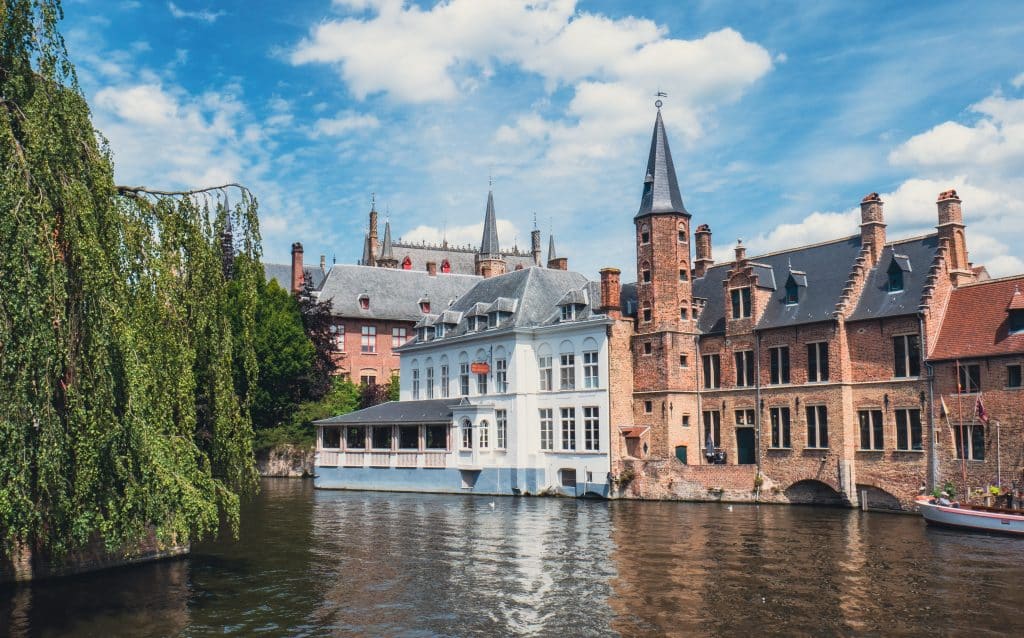
Historic buildings on the canals of Bruges. Photo: Alisa Savickaja.
History of the Canals of Bruges
As I hinted at above, the canals of Bruges have a long and illustrious history. They’ve been central to the city’s trade and industry for centuries. Bruges is known as the “Venice of the North” as, like the city in southern Italy, it relies on an extensive network of canals to ferry people around.
Canals date back to the 9th century, although the 12th century is when most of the current canals in Bruges were created. Bruges was an important center in Flanders for trade, and its canals transported supplies, artwork, and artists to churches, monasteries, and private homes and castles near and far.
As ships widened, so too were the canals widened to make space for the new, larger ships. This helped fortify Bruges’ place as an international center for trade in the medieval era. In the 15th century, however, the city lost its importance to other parts of Europe, lessening the need for canals until industrialization in the late 19th century.
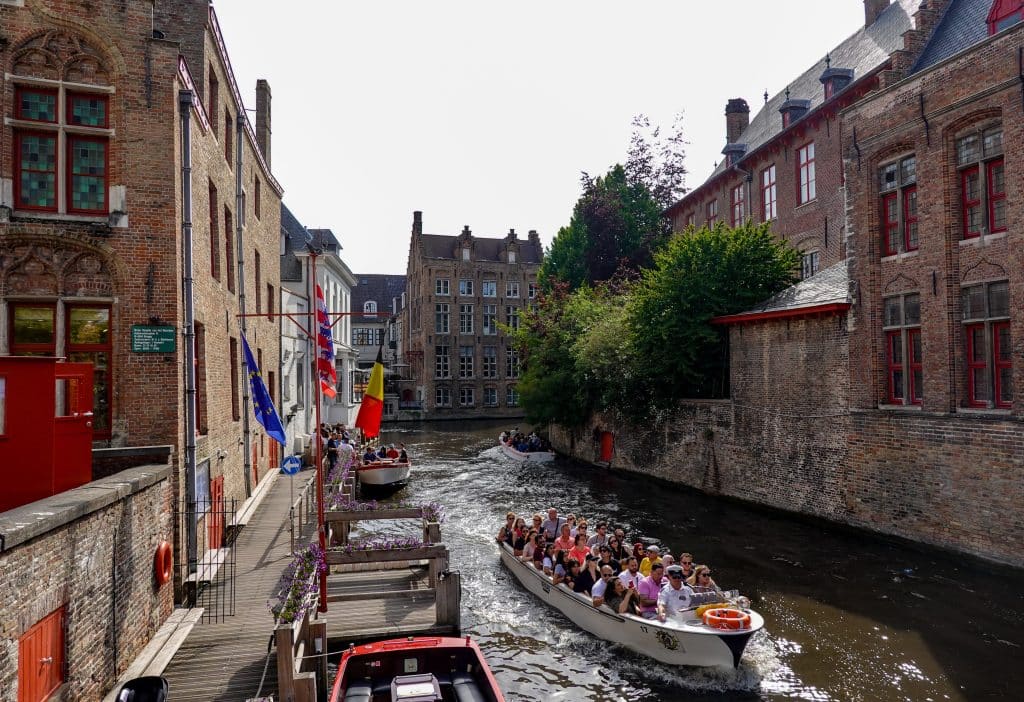
A group of tourists taking a boat tour on the canals of Bruges. Photo: Photo by Magda Ehlers.
Canals of Bruges Tours
One of the highlights of any Bruges trip is a canals of Bruges boat tour. It’s one of tourists’ favorite things to do in Bruges and for good reason. It was one of the rare times where a non-museum activity took the cake for me. Bruges has some beautiful art, but you can feel the history seeping through the history of the canals in Belgium.
Where Do Bruges Canal Boat Tours Depart From?
The canal boats in Bruges have numerous “landing stages” (docks) that passengers can get on and get off. If you want to take a canal tour, you can do so at nearly any of the canals with ease.
Similar to the way there are several port docking locations across the city in Venice, you can go to any of the stations. Not all of them offer guided tours, but you can dock on and dock off by ferry and when you get to a landing stage, you’ll be able to ask anyone who works there for help and there will be ample signage telling you where to go.
It will be impossible to miss.
Where To Sit To Take Good Photos and Videos on a Bruges Canal Boat
If you want to take photos from the canal boat on your Bruges canal tour, knowing where to sit is critical! You’ll want to sit either in the front or the back of a canal boat so you can take unobstructed pictures. Sit on one of the side seats and avoid the middle seats at all costs.
If you sit in the middle of the boat, you’re often obstructed by other people’s equipment or your photos for half the trip will have other people’s hands and cameras in them. Nobody wants that!
Personally, I took three tours because I wanted to get photos to share with my family. Every time, I sat at the front of the boat and I got some very beautiful shots.
Cost & Duration of Bruges Canals Tour
A tour of the canals in Bruges runs between 30-45 minutes, with 30 minutes being the average. Most tours will cost between 15-25€, which is pretty affordable compared to other boat-based attractions.
For instance, a boat tour at the Venetian in Las Vegas will easily run you 50 bucks and you’re not even in Venice! So it’s a pretty reasonable fare.
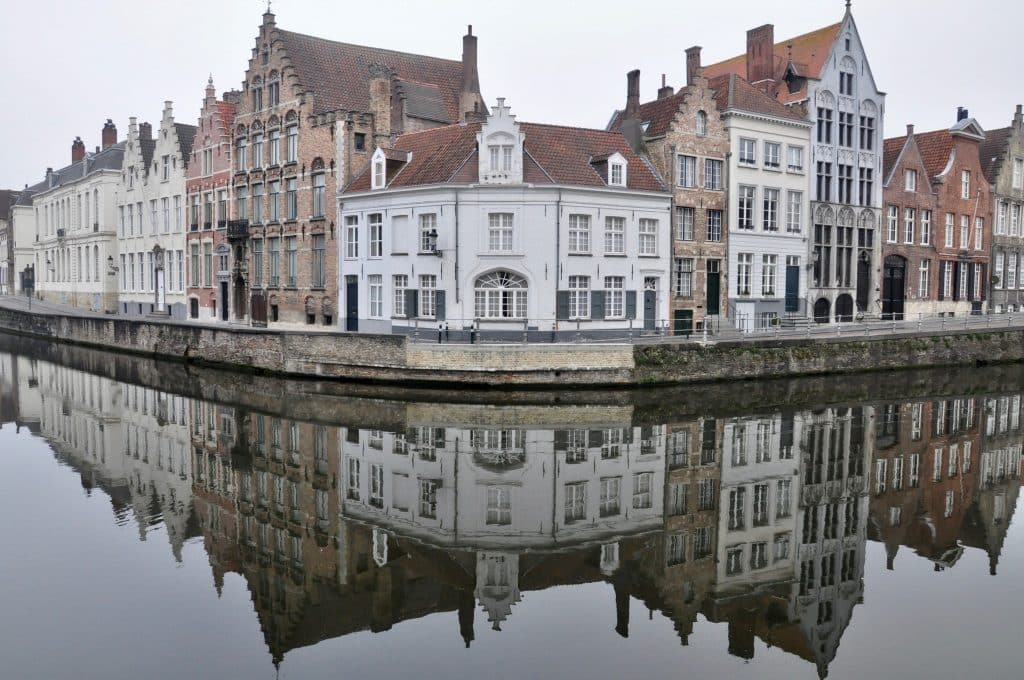
One of the most iconic instagrammable spots in Bruges on the canals. Photo by Barb Duggan.
Are the Canals of Bruges Worth Visiting?
In my opinion yes, they’re absolutely worth a visit. The canals of Bruges are some of the most charming in the world and they’re an opportunity to take a water-based sojourn through history. It’s not the most adrenaline-pumping thing you could do on vacation, but as someone who likes to take my time and take it slow when I travel, the canals are a perfect Bruges activity.


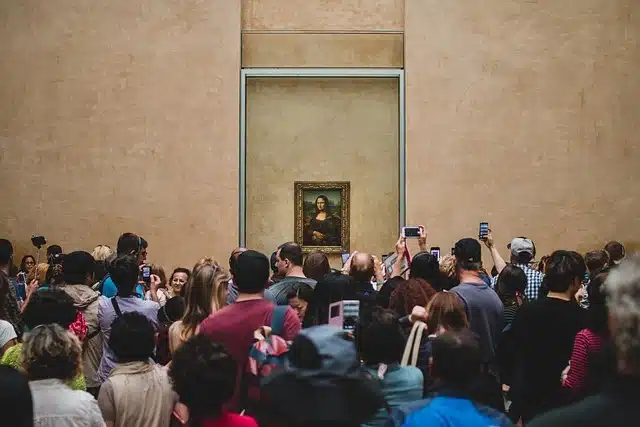
![Is Moulin Rouge Paris Worth It? Moulin Rouge Review [2024]](https://museumsandmiles.com/wp-content/uploads/2024/06/is-moulin-rouge-paris-worth-it-768x576.webp)


